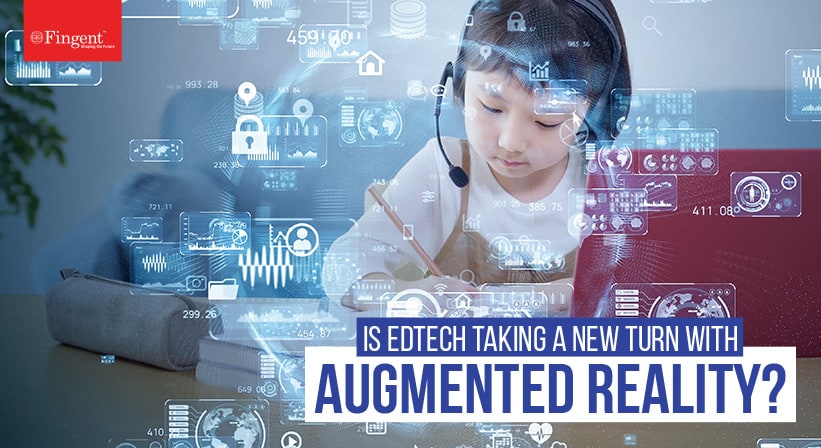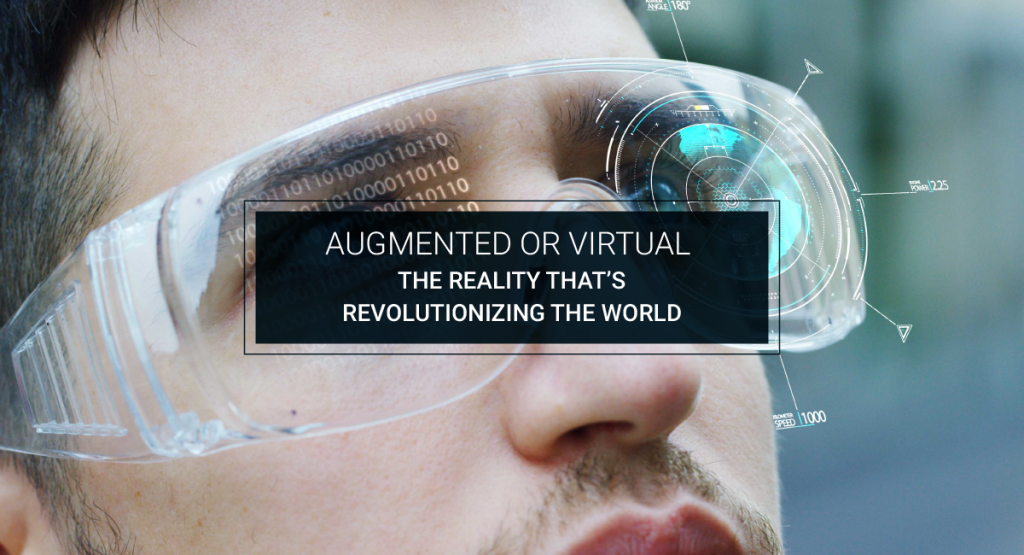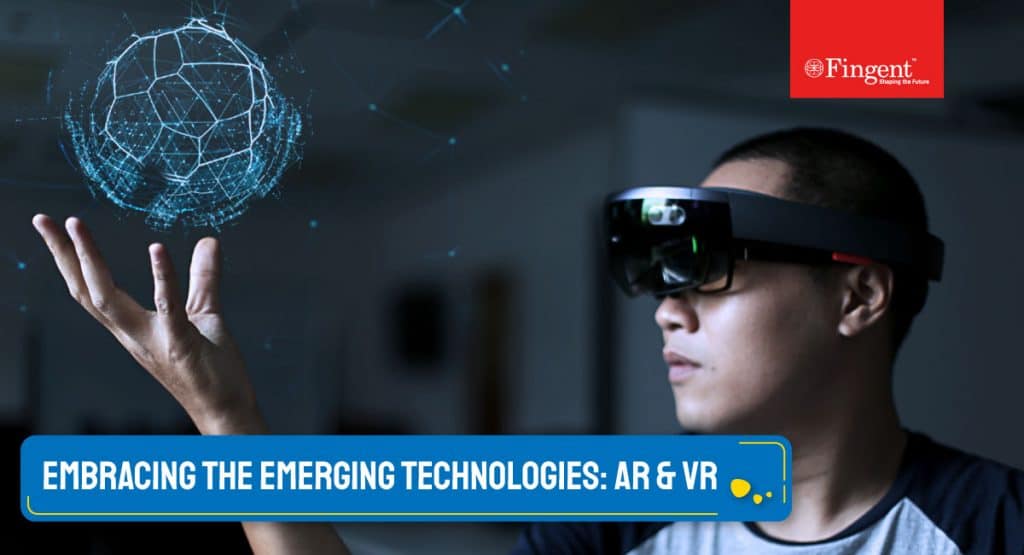Tag: Virtual Tours
Educational institutions were among the most impacted aspects of society when the coronavirus unleashed its hold on the world. Over the course of 18 months schools, colleges, and universities all around the world have faced more than their fair share of problems. No matter how difficult adapting to a completely different mode of teaching and learning is, many institutions faced the challenge head-on, pivoted, and caught up with the rapid change successfully.
In this blog, we will examine the challenges that loomed in front of the admission and college selection process and how rising technologies like VR & AI have helped tremendously in successfully dealing with these challenges.
Read more: The future of Augmented Reality in EdTech!

The Pandemic – A Massive Challenge for Students
Transitioning into the university lifestyle is usually a very significant part of an individual’s life brimming with feelings of anxiety, trepidation, and excitement. Adding into this already complex intersection of negative emotions, the aggressive transmission of COVID-19 has altered the higher education landscape on a colossal scale.
The pandemic created exponential threats to a student’s experience of streamlined higher education. Poor psychological outcomes, increasing levels of social anxiety, inducing feelings of lethargy, and reducing overall academic performance are predicted in the recent college students. To top it all, new applicants are facing the most difficulty deducing if a college is a good fit for them or not without ever entering the campus because of the pandemic restrictions.
Admissions and the College Selection Process During The Pandemic
The pandemic has forced universities and colleges to alter admission policies in recent years. There are constant updates in admission procedures that everyone must be aware of, whether it’s the extension of application deadlines or a change in how the admissions department will be evaluating applications.
1. New Selective Process
Many institutions dropped stereotypical testing methods and canceled extracurricular activities, and admissions counselors have changed how they examine and evaluate applications. Admission staff are encouraging potential students to showcase their caliber, personality, and passions during admission, particularly how they pursued the latter accompanied by a world plagued by COVID-19.
2. Efflux Of Applications
Since most popular universities and colleges decided not to consider SAT/ACT scores, they have faced a surge of applications creating greater diversity in the application pool. This hope is slightly misleading. Theoretically, it may seem as though the students have a good chance at admission, but this does not always translate into reality as these institutions still remain very selective.
3. Prosperity In Medium-Level Institutions
A great number of students who didn’t find acceptance in popular institutions found their hope in Medium-Level Institutions
4. Travel Restrictions
Due to travel restrictions, colleges provided online platforms for applications and even conducted interviews for admission through online mode.
Decrease In College Enrolment and Its Effects
Although universities and colleges have tried their maximum to keep admission procedures streamlined, College enrolment has seen a massive slump due to the pandemic. There is a drop of almost 1 million college students enrolling in higher education since before the pandemic began. Compared with the fall semester before the pandemic in 2019, undergraduate enrolment has dropped a total of 6.6%, representing the largest two-year decrease in more than 50 years. Thousands of students, many from low-income families were forced to delay school or drop out because of the pandemic and the economic crisis it has created.
Health and economic factors play into why hardly any students are enrolling in college during the pandemic and why people are opting for better-paying jobs instead of spending money on college. Given that cost is still the biggest obstacle, it isn’t surprising that prospective students suggest “free college” for a bigger impact on them finishing or returning to college – a very interesting insight that legislators are currently debating on.
The impact of having students not enrolling in college affects their individual earning potentials, as well as the economy of the country. Research shows that getting even a simple post-secondary education can lead to higher wages, lower unemployment, and greater lifetime earnings. Without this, fewer people graduate with the skills, credentials, and degrees required for a higher-paying job, which means unemployment for the student and a lack of a skilled workforce for the community.
Read more: Answering the top burning questions on AI implementation for businesses!

The Timely Rise Of VR & AI
“Change is inevitable and the disruption it causes often brings about new opportunities.”
Virtual Reality (VR) and Artificial intelligence (AI) are two cutting-edge technologies on the rise today. Their practicality has been proven in a number of fields and in the midst of the pandemic, these technologies grow greater.
Higher education administrative processes have started using AI to recruit, admit and enroll students. It acts as a powerful instrument in nurturing innovation and entrepreneurship in universities and it can accurately estimate demand, which means it can predict with precision how many applications to accept to achieve prime enrolment numbers.
Here are a few ways how AI helps:
- AI-backed software scores an applicant against a set of significant factors based on past applicants and builds software for higher education. This is comparatively easier and faster than admission officers assessing each and every application on their own.
- AI eliminates situations where an admissions officer might know an applicant and be biased, robotically flagging a personal connection that exists between two parties.
- AI can customize, speed up and personalize the admissions process for intercontinental students, including visa processing, housing selection, and course registration.
- AI has the latent to create interventions for students suffering from homesickness or social isolation and is thereby an important tool for student welfare, ultimately attracting more student applications.
#1. How Fingent Utilized AI-enabled Chatbots To Create Enhanced & Engaging Learning Experiences
Fingent helped the University of North Carolina develop an AI-driven ecosystem powered by IBM Watson that facilitates students to interact with an AI-enabled Teaching Assistant(AiTA). Multiple Chatbots are set up to manage a wide range of student inquiries. Also, important documents and teaching materials are uploaded with keyword and tag searches to make them easily accessible. The environment enables to create a healthy student-teacher relationship, instruct and engage students effectively, and improve students learning experiences.
Here are a few ways how VR helps:
- A VR package allows overseas students to get a sense of what the community and campus are like.
- It creates a high-quality image of the college and by using cost-effective devices like Google Cardboard, keeping costs in check becomes a less daunting task.
- With the help of VR, you can give enrolled students (who have not already seen the campus) a more profound sense of campus life and community. The idea is to charm them to make time for an in-person campus tour.
#2. More On Gear Up – Deploying VR For Campus Visits
GEAR UP is a virtual reality-based app that helps high school students experience a college campus through Virtual Reality and 360 Video. GEAR UP creates direct connections to college campuses and curates the college choice process. It empowers individual exploration and is completely free to download, making it easily accessible. It invites students to explore colleges and focuses more on first-generation students. The Introductory videos are anticipated to assist students in finding a suitable college to fit their interests and give them a sense of where they might want to attend. GERA UP is created as an initiation to help increase the number of students from low-income backgrounds who seek to obtain a secondary or post-secondary education.
Stay up to date on what's new

Featured Blogs
Stay up to date on
what's new



Talk To Our Experts
Extended Reality (XR), is an umbrella term that encompasses immersive technologies – AR, VR, and MR that merge the physical and virtual worlds. While XR technologies are still widely used for gaming, social media and entertainment, it is being implemented extensively in industries and supplementing humans in unimaginable ways. Experts believe that the XR market will grow from 33.0 billion dollars in 2021 to 125.2 billion dollars by 2026, at a CAGR of 30.6%. This blog will take you through the top 6 reasons why your business needs to implement the rising capabilities of Extended Reality!
What is Extended Reality?
When put simply, XR is reality tech that covers VR, AR, and MR to extend reality by merging the real and virtual worlds. Here’s a quick look at what VR, AR, and MR are!
- Augmented Reality(AR): AR connects the physical environment with the virtual world through tablets, smartphones, smart lenses, and AR glasses to augment real-life scenarios.
- Virtual Reality (VR): This technology merges the physical environment with the digital one to create a whole new virtual world. Virtual Reality headsets and head-mounted displays help provide immersive experiences of the digital world.
- Mixed Reality(MR): With the help of MR headsets, mixed reality brings together the virtual and the physical environments to deliver unique experiences.
The term Extended Reality first popped up in the 1960s, when Charles Wyckoff filed a patent for his silver-halide XR film. The film was intended for photographing bright light events such as nuclear explosions. More recently, XR has moved into the mainstream with a few enterprises leveraging it to launch applications aimed at extending the customer experience.
Read more: Augmented Reality, Virtual Reality, and Mixed Reality Detailed with Real-life Examples
Industries Transformed by Extended Reality
AR, VR, and MR are developing at a rapid rate and transforming the way businesses are operating, communicating, and collaborating. Here are some of the business industries that have undergone a drastic change with these technologies.
- Marketing and advertising
- Healthcare
- Education and training
- Manufacturing and engineering
- Real estate
- Retail
- Gaming
- Art
XR offers endless possibilities and so any field can benefit by leveraging XR into their business processes.
Reasons Why You Need to Leverage XR Technologies for Your Business
1. Cultivates brand awareness
With changing customer demands and fierce competition, it is getting difficult to attract potential customers. Simply launching new products and services is not enough if you want to grow your business.
XR technology helps deliver a unique experience for users, foster consumer loyalty, and build brand awareness. For example, Gucci offers AR-fueled apparel and accessories try-on app that encourages users to try their accessories before buying thereby providing a stand-alone experience for users.
XR technology not only helps capture the attention of your customers but also promotes a positive experience with the brand.
2. Better customer experience
Customer experience is important for the success of any marketing strategy. XR’s ability to deliver immersive experiences will help you connect with your customers better and establish deeper emotional connections. XR helps transport your customers to different places and even attend live events without leaving the comfort of their homes.
L’Oreal leveraged AR technology to help their customers ‘try’ skincare products before buying and saw its conversion rate triple.
3. Increases customer engagement
As per a report by Deloitte, 90% of the companies are implementing AR and VR technology in their business. Another report reveals that 40% of customers are willing to pay more if they can experience it through Augmented Reality technology. Yet another report reveals that 58% of customers are more likely to buy a product if they have tried it out.
These statistics suggest that extended reality technology must be implemented in your business if you want to grow. XR allows customers to get detailed information and visualization about the products and services. It enables them to try out various products in various combinations and even test patterns and colors before purchasing them.
With XR technology, brands can increase engagement rate significantly and attract more customers and also provide them with a positive experience.
Read more: Augmented Reality Vs Virtual Reality – The Future Technology
4. Offers convenience
There’s no denying that online shopping is convenient and now with the pandemic forcing people to stay indoors most of the time, it is only becoming more popular. XR helps brands improve the shopping experience and also makes it less time-consuming. It helps consumers find what they are looking for faster and eliminate uncertainty from purchase decisions.
IKEA, for example, allows consumers to use their Place app and place a piece of furniture in their home using their phone. This improves the level of convenience, delivers a better customer experience, and eliminates any uncertainty before purchase.
5. Smarter Libraries
Data is the key to thrive today’s digital era. XR technologies place data in the context such that users can get better results.
For instance, you can use smart glasses to get a visual walkthrough to understand the true impact of the data collected instead of poring through spreadsheets and dashboard metrics for hours. XR technologies can help you make better and informed business decisions.
6. Create positive associations
Extended Reality provides brands with endless opportunities to create and implement emotional campaigns for their products. Based on the visual cues you include in your brand campaigns, you could encourage consumers to conclude your brand’s qualities.
XR helps connect with your audience in a way that activates their emotions and thus helps build a positive brand association. This will ensure consumers prefer your brand over others and establish loyalty. North Face, for example, launched an immersive VR experience of the Nepal landscape to its customers to identify with the brand’s identity.
Read more: Accelerating AR/VR Adoption Among Customers
Takeaway
Today, customers expect an intuitive experience from their brands and XR is becoming the new form of a conversation between brands and customers. Using immersive technologies, enterprises can nurture a culture of digital transformation and increase efficiency and profitability in the digital space.
Driven by immersive technologies, we at Fingent can help your brand increase awareness, engagement, and conversion. We have systems in place to help support large-scale communication. If you have a project in mind, we can help convert it to reality. Call us today!
Stay up to date on what's new

Featured Blogs
Stay up to date on
what's new



Talk To Our Experts
Why Implement Virtual Reality in your Real Estate Business
Virtual Reality is rapidly becoming a part of every modern business, and the real estate industry is not excluded from the list. In fact, VR technology opens up many innovative opportunities for real estate businesses to market their listings in a better way.
Generally, a real estate deal involves checking the listings, price negotiations, and an in-person visit to the property. This workflow is very robust and has always brought forth good results. However, it is very time-consuming for both the client and the realtor. Sometimes, visiting the property can be inconvenient for the homebuyers as well. This is where Virtual Reality tools can be a game-changer.
Related Reading: Augmented Reality & Virtual Reality: Transforming The Real Estate Industry
Virtual Tours
VR technology allows realtors to showcase the property to their clients as if they were there in the flesh. The client just has to put on a VR headset and experience an immersive three-dimensional tour of the property. Potential homebuyers can virtually visit multiple properties this way, even without having to leave their home once. This allows them to make an informed decision when buying or renting the property.
As for the real estate companies, employing VR tools allows them to expand their reach to more clients. As the internet is not confined to any physical boundaries or borders, realtors can offer their listings to global clients as well. This can be of great help to long-distance buyers as well as to those who are looking to migrate to a different country.
Realtors can also offer a 360-degree virtual tour of the property for clients who do not have access to a VR headset. Alternatively, they can create an interactive virtual tour, wherein the user can move from one place to another within the property by clicking on various hotspots. Both of the guided and interactive virtual tours can be easily included along with the property listing on the website.
Virtual Staging
Virtual Reality also allows realtors to add furniture and other essential items in the property so that it looks more appealing and cozy to the clients. Staging has been an integral part of the real estate business for years and is widely used when uploading photos of the property on the website. VR technology can make this more realistic.
Virtual staging is one of the best ways to market a newly built home or apartment. This can be done by creating 3D tours of the property with furniture and fixtures. That makes it very simple for the client to visualize how their future personal space will be. As this connects potential buyers to the property emotionally, it motivates them to make a quick decision.
Real estate businesses can also employ VR technology to boost the sales of under-construction properties using virtual staging. Realtors find it very difficult to market such properties because empty buildings and unfinished structures do not attract buyers at all. This gap can be efficiently filled using architectural 3D visualization and virtual staging tools.
Virtual Commerce
Virtual staging of the property has another benefit too. Apart from creating a premium and lasting impression on the potential buyers, it can also promote virtual commerce. Realtors can easily add a purchase option with any element when staging the property and creating the 3D tour. This allows the clients to customize the space as per their personal preferences.
For instance, real estate businesses can integrate an online store with the staged elements. This will give the clients the options to, say, change the style of the furniture or choose a different light fixture. This not only makes the virtual tour of the property more interactive but also allows customers to imagine how it will be when they move in.
Even if a client does not make any changes to the interior staging during the virtual tour of the property, there are still chances that they may find the items included in the 3D tour interesting and may buy them eventually when they buy or rent the property. This is always an added advantage for the realtor.
Related Reading: Tech Disruptors in the Real Estate Space
The Key Benefits of Employing VR Tools in Real Estate Business
The most striking advantage of incorporating Virtual Reality in real estate business is that it saves time for both the realtor and the client. It is much cost-effective than taking the client to check out multiple properties.
Besides, an immersive 3D virtual tour of all the properties listed on the website will be available round-the-clock to the clients, which means that they can virtually visit any property at any time. This allows realtors to work with more clients, which means more opportunities to sell a property.
Another great thing about VR technology is that it gives clients an instant sense of ownership. As they get the options to customize the space as per their liking during the virtual tour, checking out the different areas of the property quickly establishes a personal connection with the clients.
This can be very helpful in inspiring them to make a purchase or sign a rental agreement. It is also possible to add to the customer experience by including interactive tools in the virtual tour, such as mortgage calculators and neighborhood descriptions.
There is no arguing that Virtual Reality has already made an impact in the real estate industry. Most of the big names have adopted the technology for improving their reach, and soon, every real estate business will incorporate VR technology for better productivity.
If you would like to work with an expert to build your VR strategy, we can help. Contact us.
Stay up to date on what's new

Featured Blogs
Stay up to date on
what's new

















